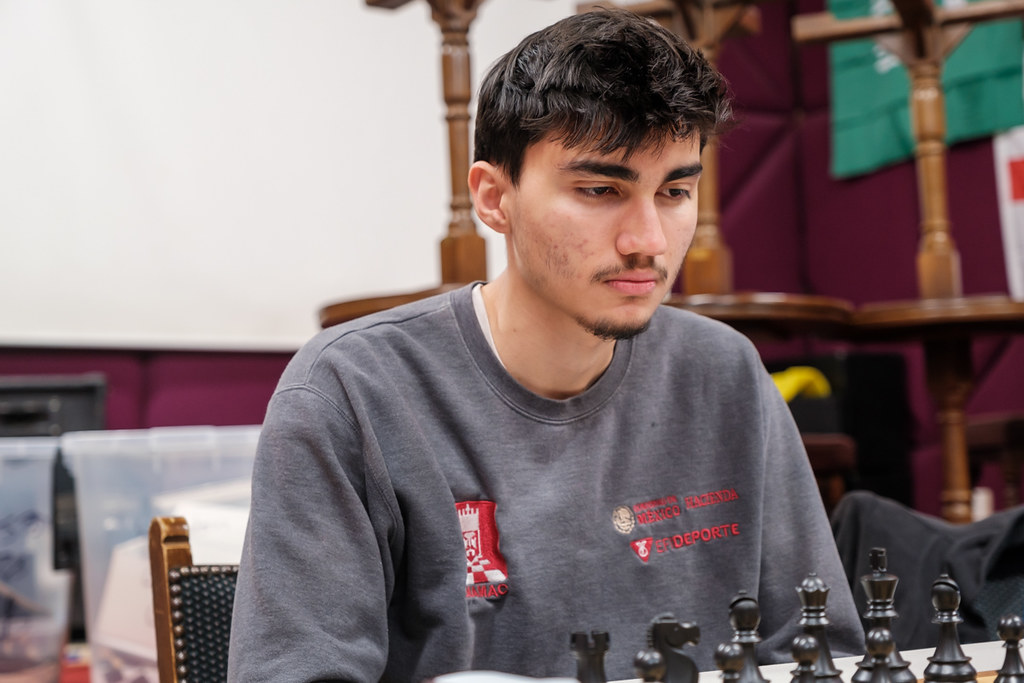Thames Valley League division 1 match played at the Willoughby Arms, Kingston on 6 March 2023
On 6 March we welcomed Richmond A to the Willoughby for a Thames Valley League match. Richmond were not at full strength, and suffered from a default on board 2. As usual (may this continue) Kingston had a very strong line-up, and the course of the match demonstrated the contrast implied here.
The match featured some opening lines for the connoisseur. Pride of place for its name alone must go to the Vienna Game Frankenstein-Dracula Variation which Will Taylor, as Black, bravely entered into against Jon Eckert. Anyone wondering why it has such an extravagant name could look at the brilliant game Ost-Hansen v Nunn 1974 (featured in John Nunn’s book Secrets of Grandmaster Chess). The variation was baptised by Tim Harding in his book The Vienna Game, due to the bloodthirsty character of the play in the main line.
Will’s game was sedate compared to Ost-Hansen v Nunn, but still very interesting. After 1. e4 e5 2. Nc3 Nf6 3. Bc4 Nxe4 4. Qh5 Nd6 5. Bb3, Will played 5…Be7 rather than the provocative 5…Nc6, which leads to the sharpest lines.
Jon insisted on sharp play, however, and the game continued 6. d4 (Qxe5 is safer) exd4 7. Nb5 g6 8. Qf3 0-0 9. Nxd4, which allowed the sequence 9 …c5! 10. Nde2 c4.
Now 11. Ba4 is met by 11…Qa5+ 12. Nc3 b5 and if Qxa8 Black has Bb7 winning the queen. Jon played 11. Bh6 instead, and Will won two pieces for a rook, eventually forcing resignation in 44 moves.

At the other end of the tactical scale was Vladimir Li’s highly positional opening against Maks Gajowniczek. Maks played a Sicilian which led to a phase of intriguing manoeuvring in which Vladimir gained an advantage. He was clearly going the right way about capitalising on this when Maks allowed not a slow but a sudden and violent end to the game. In the position below, Maks played 34…Nd3. How did Vladimir win? (Answer at foot of column – no peeking!)
The games on the bottom two boards were perhaps more straightforward. On board 5, my opponent made an unsound piece sacrifice in the Giuoco Piano. I probably didn’t find the quickest way to realise my advantage, but eventually I managed it. On board 6, Alan Scrimgour played the Benoni Defence and reached this position:
Alan has just played 7…b5. This is not a gambit, because after Adrian Waldock’s 8. Bxb5, Alan came back with 8…Nxe4! 9. Nxe4 Qa5+ 10. c3 (Nc3 is better, as then Black has to exchange off his strong fianchettoed bishop to win back the piece, but Black would still have some advantage) 10…Qxb5. 11 a4 Qa6 (continuing to prevent White from castling and maintaining a positional plus as Black’s white squares are weak and White has two good bishops). Alan went on to win in 22 moves.
Finally, turning to the game on top board, David Maycock’s Ruy Lopez was countered by Gavin Wall’s Steinitz Defence Deferred (1. e4 e5. 2 Nf3 Nc6 3 Bb5 a6 4, Ba4 d6), which went out of fashion after the 1930s but is now having a bit of a renaissance. After 1. e4 e5 2. Nf3 Nc6 3. Bb5 a6 4. Ba4 d6 5. c3 Bd7 6. d4 Nge7, David played the rare but forceful 7. h4, which Black countered with 7…exd4 8 cxd4 d5.
I’m guessing that both players were out of their opening books by this point. There followed a complex middlegame in which David went on the offensive, castling queenside and sac-ing a knight (he definitely believes knights are there to be sac’d) to open up Black’s king.
The sac is sound and gives White a very healthy, probably winning, edge. This is the key position that resulted a few moves later after Gavin’s 26…Rh6.
Here there is a winning move, but it is not easy to find. David plays complex chess and tends to get into time trouble, especially in evening league matches with their short time controls (and the Thames Valley League unfortunately has shorter controls than most). David played the very logical 27. Qa8+, which wins the knight back and seems to push the black king into no-man’s land. But it actually gives Black a plus after 27… Kd7 28. Qxb7 (28. Ba4+ must be played first to minimise the damage) 28…Rb6! The tables are now turned and Gavin finished the game with a perfectly judged tactical sequence: 29.Qa7 Rxb2+ 30.Kc1 Rxc2+ 31.Kxc2 Qxe4+ 32.Rd3 Qc4+ 33.Kd2 Bf4+ 34.Re3 Qxd5+ 35.Ke2 Ra8 36.Rd1 Qxd1+ 37.Kxd1 Rxa7 38.Re4 Bd6 0-1
So what was the move that David missed in the position above? What should he have played instead of 27. Qa8+? The winning move is 27. d6!!, not least because it would allow Qd5+ in the event of Rb6. An engine reckons 27. d6 gives White an advantage of +3, and offers this winning line (among others): 27. d6 Bxd6 28. Qa8+ Kd7 29. Qxb7 Rf6 30. Rd3 Ke7 31. Rgd1 Kf8 32. e5 Rxf2 33. exd6 cxd6 34. Rxd6 Rxd6 35. Rxd6 g6.

The move itself and and the tactical complexities that follow are hard to fathom in time trouble, even for players of David’s talent and vision. But after the game he did note an important principle that might have helped to spot d6. “It’s incredible”, he said, “how sometimes you just want to get rid of your material to make space for your other pieces.” That one intermezzo to remove his own pawn would have made all the difference.
The final result was 5-1 to Kingston, the same score as in our away match against them in November. This means that Kingston have reinforced our position at the top of the Thames Valley League, with 6.5 points from seven matches. A very strong situation, but there are still five matches for us to play, so chickens are not being counted yet. Nor will they be until long after Easter. Definitely eggs before chickens in this instance.
David Rowson, Kingston first-team captain
• Vladimir’s winning move was 35 Qxg7+, which led to immediate resignation because of 35…Kxg7 Re7++.

